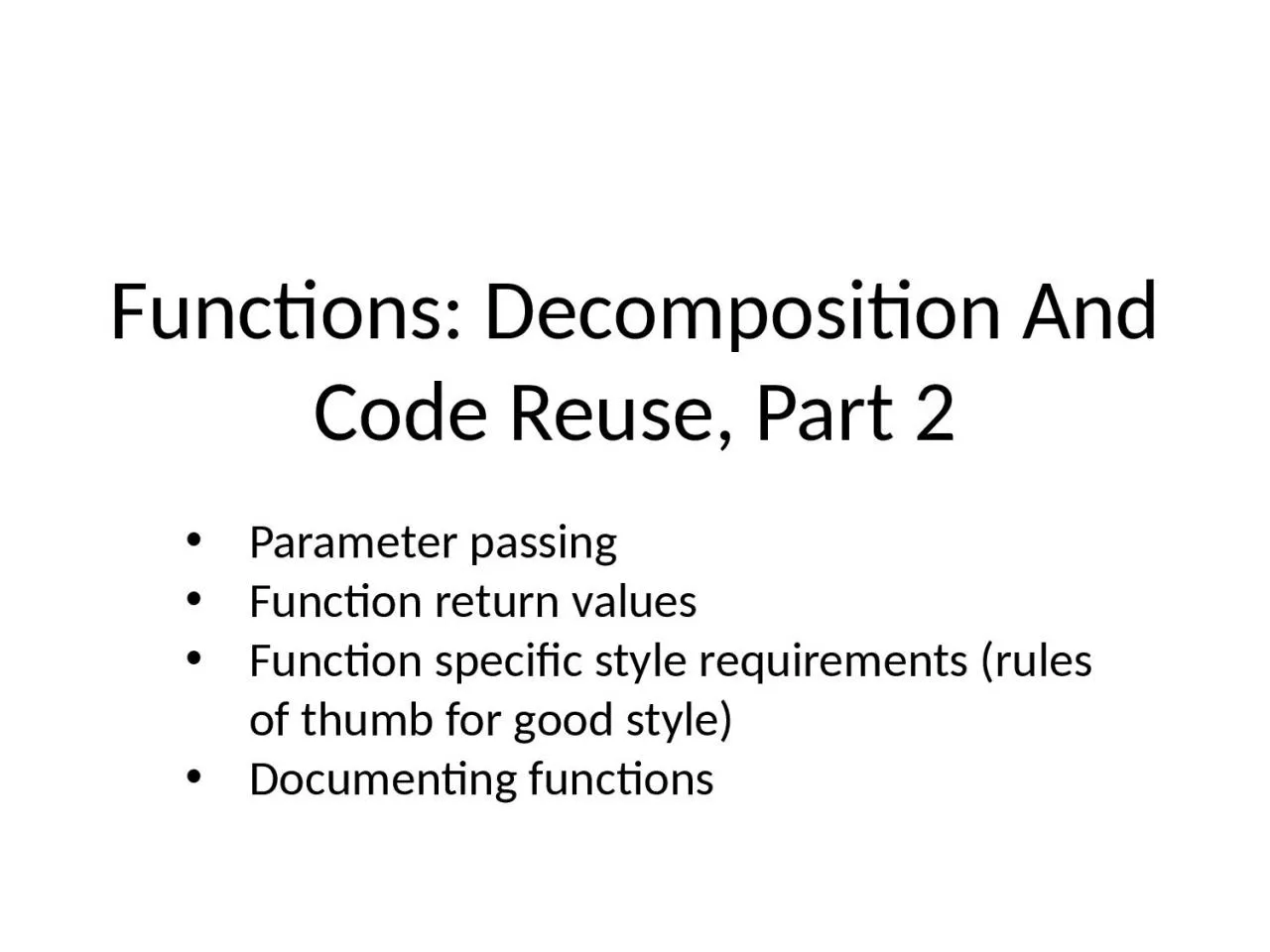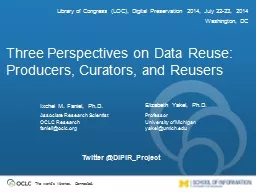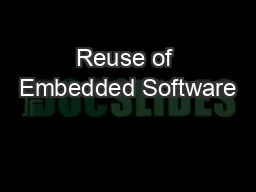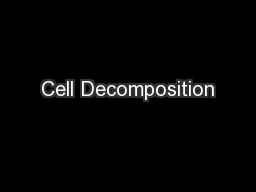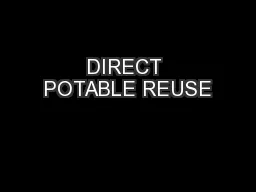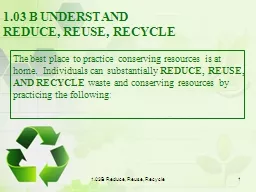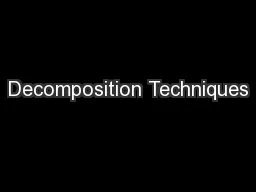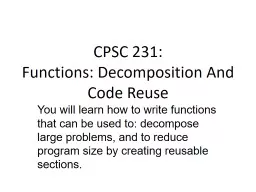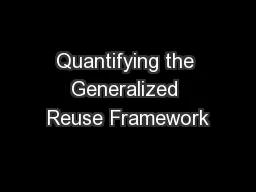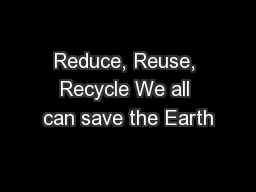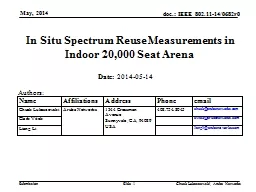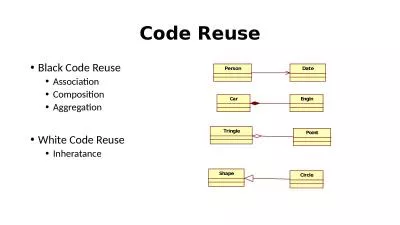PPT-Functions: Decomposition And Code Reuse, Part 2
Author : caroline | Published Date : 2024-03-13
Parameter passing Function return values Function specific style requirements rules of thumb for good style Documenting functions New Problem Local Variables Only
Presentation Embed Code
Download Presentation
Download Presentation The PPT/PDF document "Functions: Decomposition And Code Reuse,..." is the property of its rightful owner. Permission is granted to download and print the materials on this website for personal, non-commercial use only, and to display it on your personal computer provided you do not modify the materials and that you retain all copyright notices contained in the materials. By downloading content from our website, you accept the terms of this agreement.
Functions: Decomposition And Code Reuse, Part 2: Transcript
Download Rules Of Document
"Functions: Decomposition And Code Reuse, Part 2"The content belongs to its owner. You may download and print it for personal use, without modification, and keep all copyright notices. By downloading, you agree to these terms.
Related Documents

